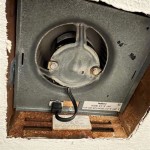Get Rid of Mold In Bathroom Ceiling: A Comprehensive Guide
The bathroom, a space designed for cleansing and hygiene, is paradoxically prone to mold growth. The warm, humid environment created by showers and baths provides ideal conditions for mold spores to flourish. The ceiling, often overlooked in routine cleaning, is particularly susceptible due to rising steam and poor ventilation. Addressing mold growth promptly and effectively is crucial not only for aesthetic reasons but also for maintaining a healthy indoor environment. This article provides a detailed guide on identifying, removing, and preventing mold growth on bathroom ceilings.
Mold is a type of fungus that thrives in damp, dark, and poorly ventilated environments. It reproduces through tiny, lightweight spores that are ubiquitous in the air, both indoors and outdoors. When these spores land on a moist surface, they can begin to grow and multiply, forming visible colonies. While some molds are harmless, others can trigger allergic reactions, respiratory problems, and other health issues. Therefore, identifying and addressing mold growth is paramount for maintaining a healthy home environment.
Bathroom ceilings are particularly vulnerable due to the constant exposure to humidity. Showers and baths release warm, moist air that rises and condenses on cooler surfaces, such as the ceiling. If the bathroom lacks adequate ventilation, this moisture can linger, creating a breeding ground for mold. Furthermore, minor leaks from plumbing or the roof can also contribute to moisture buildup, exacerbating the problem.
Identifying Mold on Your Bathroom Ceiling
The first step in addressing mold growth is accurate identification. Mold on bathroom ceilings can present in various forms, differing in color, texture, and pattern. Recognizing the signs of mold early can prevent widespread infestation and minimize potential health risks.
Visual Signs: The most obvious sign of mold is the presence of visible growth. This can manifest as small, dark spots, larger patches, or even a fuzzy or slimy coating on the ceiling surface. The color of the mold can vary, ranging from white, gray, green, brown, or black. Black mold, often referred to as *Stachybotrys chartarum*, is particularly concerning due to its potential to produce mycotoxins, which can be harmful to human health. However, it is important to note that not all black-colored mold is *Stachybotrys*, and accurate identification requires laboratory testing. Other visual indicators include discoloration of the ceiling paint or wallpaper, peeling paint, or bubbling wallpaper.
Musty Odor: Even if visible mold growth is not immediately apparent, a persistent musty or earthy odor in the bathroom can indicate the presence of hidden mold. This odor is produced by volatile organic compounds (VOCs) released by the mold as it grows and decomposes organic material. The intensity of the odor may vary depending on the extent of the mold infestation and the humidity levels in the bathroom.
Health Symptoms: Exposure to mold can trigger a range of health symptoms, particularly in individuals with allergies, asthma, or compromised immune systems. Common symptoms include sneezing, coughing, runny nose, itchy eyes, sore throat, skin rashes, and difficulty breathing. If you experience any of these symptoms and suspect mold exposure, it is crucial to consult a healthcare professional. It is important to note that these symptoms can also be caused by other factors, so it's important to consider the context of your bathroom environment.
Checking for Underlying Moisture Issues: Identifying and addressing the source of moisture is paramount in preventing future mold growth. Check for leaky pipes, dripping faucets, condensation around windows and other surfaces, and inadequate ventilation. Inspect the ceiling for water stains, which can indicate a roof leak or plumbing problem. Addressing these issues will not only prevent mold recurrence but also protect the structural integrity of your home.
Removing Mold from Your Bathroom Ceiling
Once mold has been identified, the next step is to remove it safely and effectively. The method of removal will depend on the extent of the mold growth and the type of surface affected. For small areas of mold growth (less than 10 square feet), DIY methods are generally sufficient. However, for larger infestations, professional mold remediation services are recommended. Safety precautions are essential during the removal process to protect yourself from exposure to mold spores.
Safety Precautions: Before beginning the cleaning process, it is crucial to protect yourself from exposure to mold spores. Wear appropriate personal protective equipment (PPE), including a respirator (N95 or higher rating), gloves (preferably rubber or nitrile), and eye protection (goggles). Open windows and doors to increase ventilation and prevent the concentration of mold spores in the air. If possible, consider using a fan to exhaust air from the bathroom to the outside.
Cleaning Solutions: Several effective cleaning solutions can be used to remove mold from bathroom ceilings. These include:
- Bleach Solution: A solution of one part bleach to ten parts water is a common and effective mold killer. However, bleach should be used with caution, as it can damage certain surfaces and release harmful fumes. Always ensure adequate ventilation when using bleach and never mix it with ammonia, as this can create toxic gases.
- Vinegar: White vinegar is a natural and non-toxic alternative to bleach. It is effective in killing many types of mold and is safe for use on most surfaces. Spray the affected area with undiluted vinegar, let it sit for an hour, and then wipe it clean with a damp cloth.
- Hydrogen Peroxide: A 3% solution of hydrogen peroxide is another effective mold killer that is safe for use on most surfaces. Spray the affected area with hydrogen peroxide, let it sit for 10-15 minutes, and then wipe it clean with a damp cloth.
- Commercial Mold Cleaners: Numerous commercial mold cleaners are available on the market. These products are specifically formulated to kill mold and prevent its recurrence. Follow the manufacturer's instructions carefully when using commercial mold cleaners.
Cleaning Procedure:
- Prepare the cleaning solution according to the instructions above.
- Apply the cleaning solution to the affected area using a spray bottle, sponge, or cloth.
- Allow the cleaning solution to sit on the surface for the recommended time (usually 10-15 minutes).
- Scrub the affected area gently with a brush or sponge to remove the mold.
- Rinse the cleaned area with clean water and dry it thoroughly with a clean cloth or towel.
- Repeat the process if necessary until all visible mold is removed.
- Dispose of any used cleaning materials (sponges, cloths, etc.) in a sealed plastic bag to prevent the spread of mold spores.
Addressing Porous Surfaces: If the mold has penetrated porous surfaces such as drywall or ceiling tiles, it may be necessary to replace the affected materials. Mold can be difficult to remove completely from porous surfaces, and simply cleaning the surface may not eliminate the problem entirely. Consulting with a professional mold remediation specialist is recommended in these cases.
Preventing Future Mold Growth
Preventing mold growth is the most effective way to avoid the health risks and property damage associated with mold infestations. By addressing the underlying causes of mold growth, such as excess moisture and poor ventilation, you can create a less hospitable environment for mold spores.
Improve Ventilation: Adequate ventilation is crucial for preventing moisture buildup in bathrooms. Install or upgrade the bathroom exhaust fan and ensure that it is used during and after showers and baths. The exhaust fan should be sized appropriately for the size of the bathroom and should vent to the outside, not into the attic or crawl space. Consider leaving the bathroom door open after showering to allow moisture to dissipate more quickly.
Control Humidity: High humidity levels create ideal conditions for mold growth. Use a dehumidifier in the bathroom to maintain humidity levels below 50%. Consider using moisture-absorbing products, such as desiccants, to absorb excess moisture from the air. Repair any leaks promptly to prevent moisture from accumulating. Pay attention to condensation on windows and other surfaces and wipe it away immediately.
Regular Cleaning: Regular cleaning of the bathroom, including the ceiling, is essential for preventing mold growth. Wipe down surfaces regularly with a mold-inhibiting cleaner to prevent mold spores from taking hold. Pay particular attention to areas that are prone to moisture, such as the shower, bathtub, and sink. Clean up spills promptly to prevent moisture from seeping into porous surfaces.
Choose Mold-Resistant Products: When remodeling or renovating the bathroom, consider using mold-resistant products, such as mold-resistant paint, drywall, and grout. These products contain additives that inhibit the growth of mold and can provide an extra layer of protection against mold infestations. Ensure proper installation of these materials to maximize their effectiveness.
Regular Inspections: Conduct regular inspections of the bathroom, including the ceiling, to identify any signs of mold growth early on. Catching mold growth early can prevent it from spreading and becoming a more serious problem. Pay attention to any changes in the bathroom's environment, such as new leaks or unusual odors. Promptly address any issues that could contribute to mold growth.
By diligently following these preventative measures, homeowners can significantly reduce the risk of mold growth on bathroom ceilings and maintain a healthy and comfortable living environment. Remember, addressing moisture issues and ensuring proper ventilation are key to preventing mold and maintaining the integrity of your home.

How To Permanently Remove Mold From Bathroom Ceiling With Vinegar

How To Get Rid Of Mold In Bathroom Ceiling Step By Guide Aloraircrawlspace

Bathroom Ceiling Mold Removal When To Clean Call Branch Environmental

6 Steps To Get Rid Of Mold On The Bathroom Ceiling Redfish Inspections

Detecting And Preventing Mold Growth On Your Bathroom Ceiling Trusscore

Professional Tips For Bathroom Ceiling Mold Removal

Mold On Bathroom Ceiling How To Remove From Ceilings

How To Remove Mould From Ceilings Simply Spotless Cleaning

How To Get Rid Of Mold On Your Bathroom Ceiling Aqa

Mold On Walls The Key To Permanent Removal Is Knowing Where It Hides
See Also







